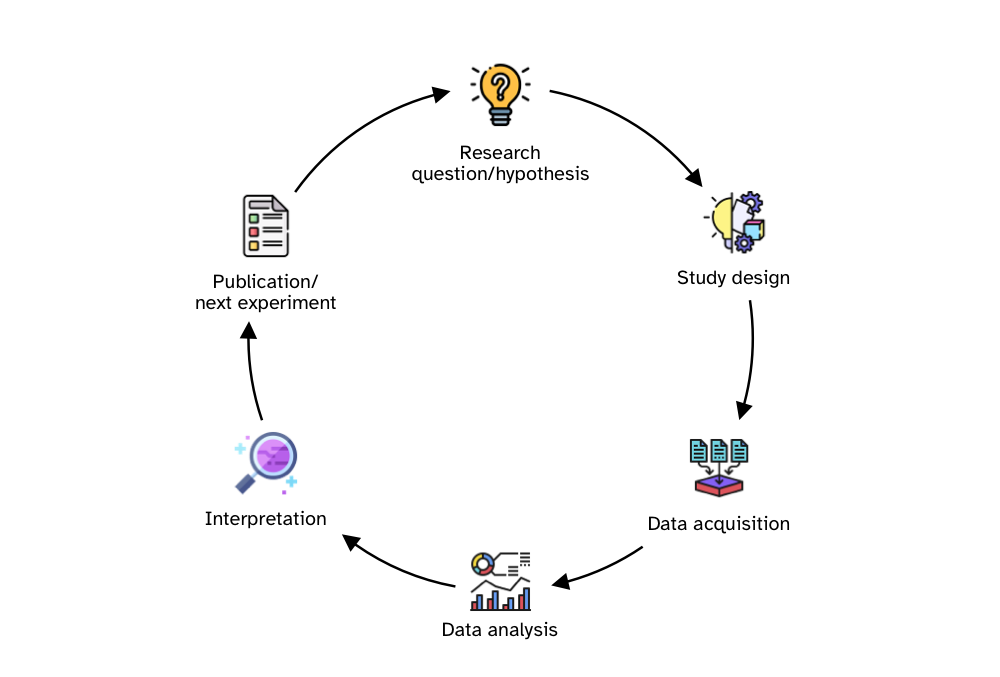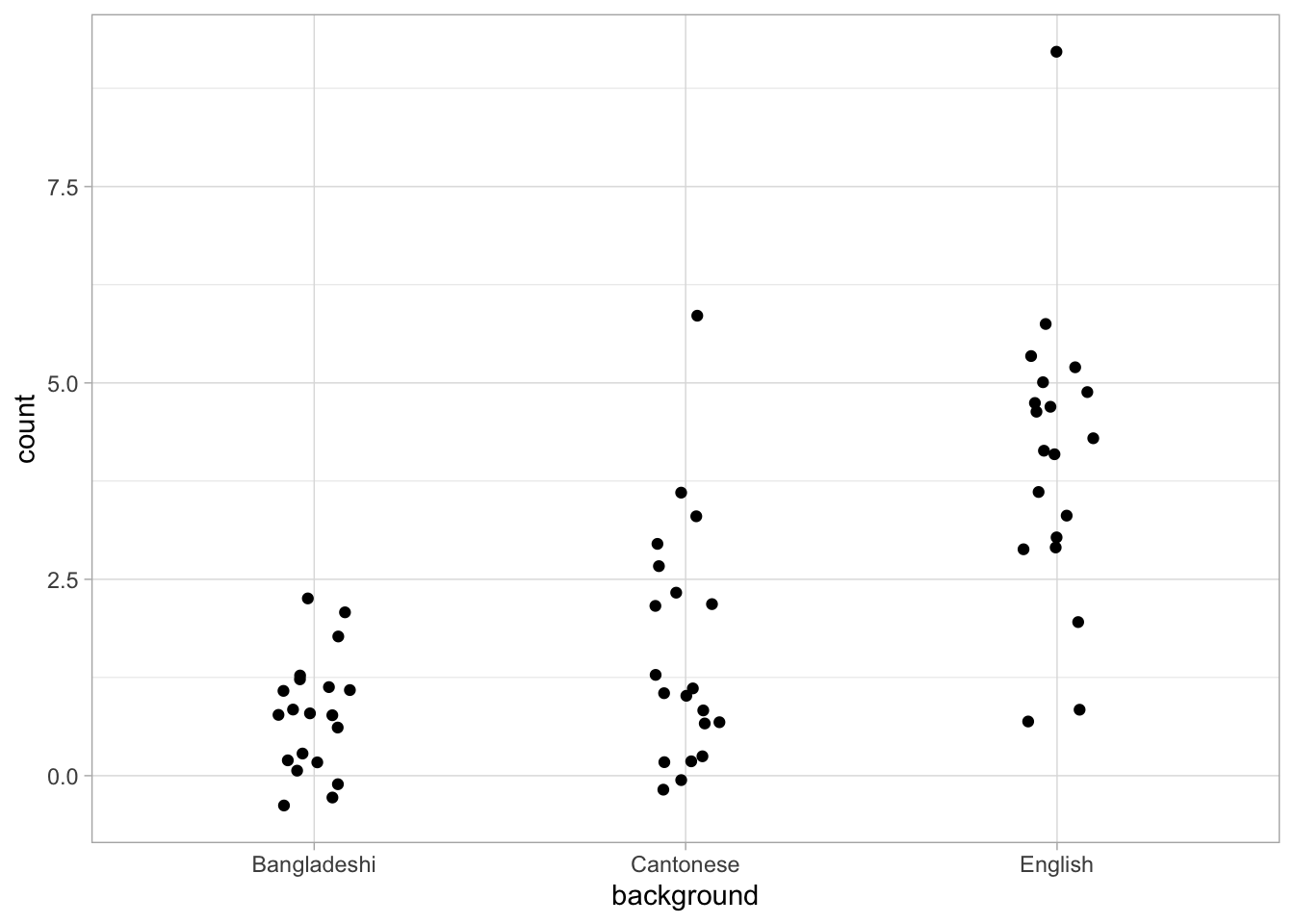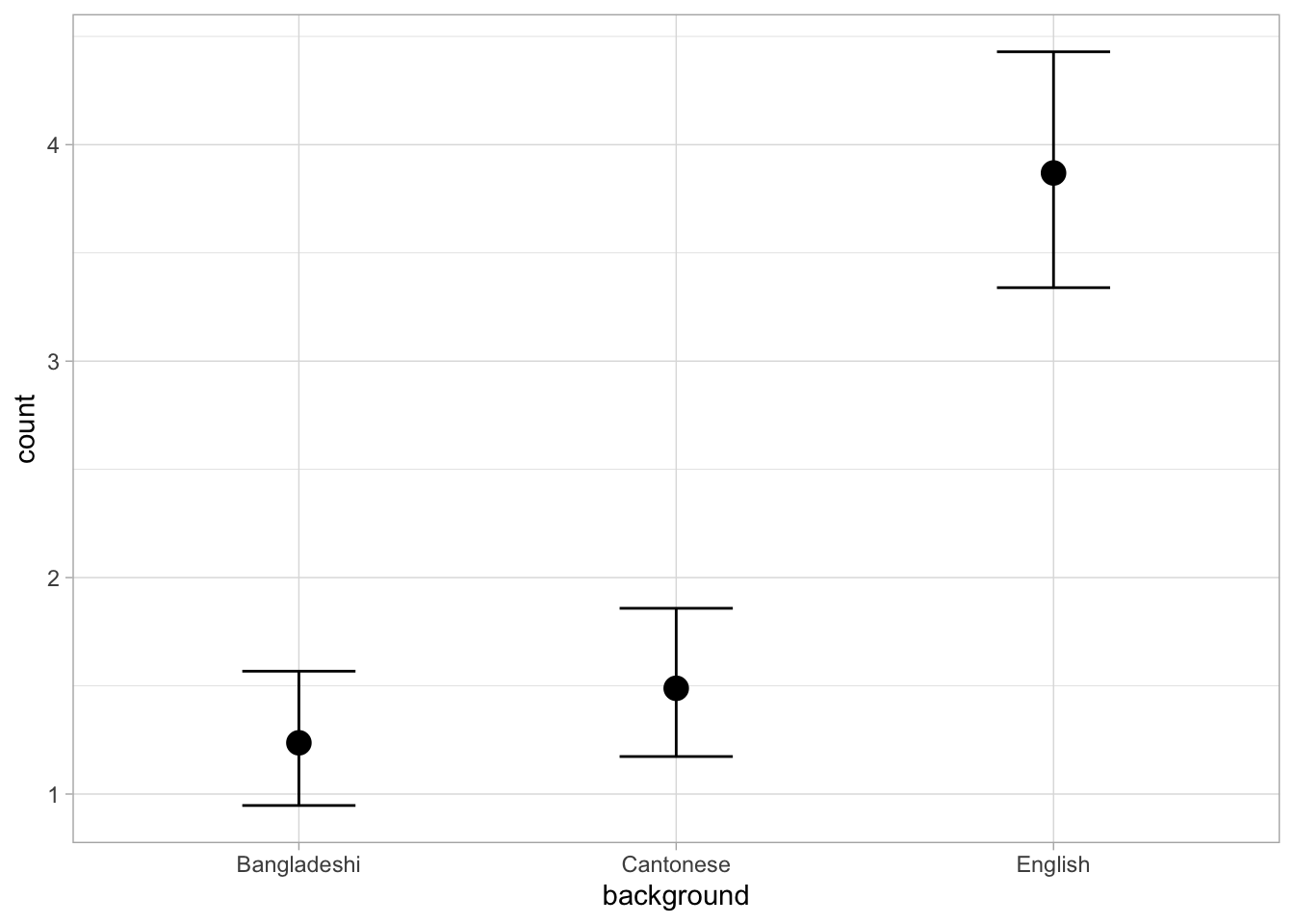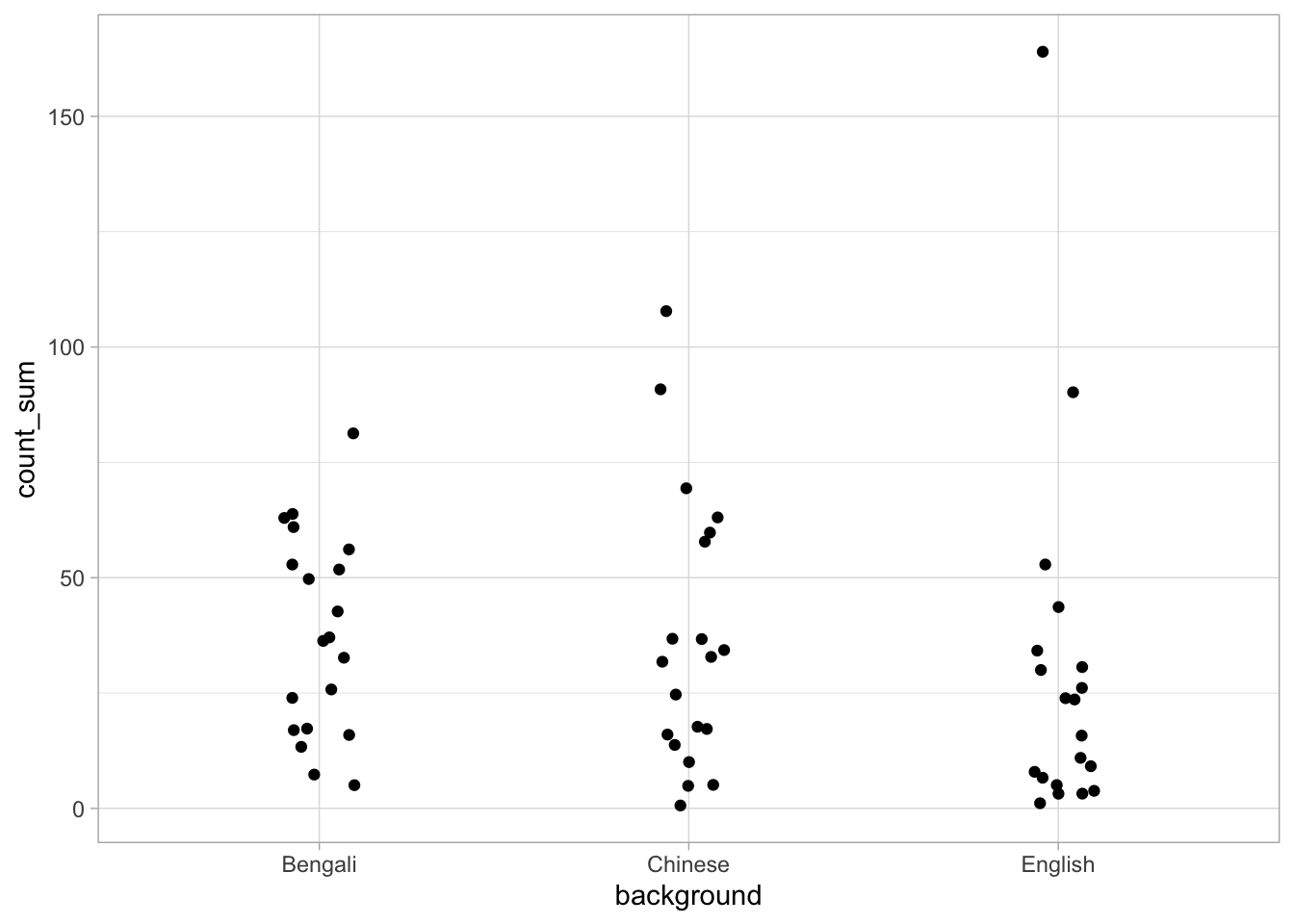We fitted a Bayesian regression model to the number of gestures produced by each infant, using a Poisson distribution. As the only predictor, we included cultural background (Bengali, Chinese, English). This predictor was coded using indexing (by suppressing the intercept with 0 + in the model formula).
Based on the model and data, the number of gestures by cultural background are 36–40 for Bengali infants, 35–38 for Chinese infants, and 28-31 for English infants, at 80% confidence. When comparing each cultural background, there is an 80% probability that the difference in gesture number is between -3.5 and 1.5 for Bengali vs Chinese, -11 and -6 for English vs Bengali, and -10 and -5 for English vs Chinese.





